Updated October 29, 2023
It’s not uncommon for another passenger to take the wrong bag from a luggage carousel or overhead locker. Or, for your checked or gate-checked carry-on bag to not arrive with you at your destination. The inconvenience associated with these scenarios, and others, can be avoided or minimized with these tips on luggage tags, trackers, and other tools to tag, track, secure, and differentiate your bags from those of other travellers.
Table of Contents
- No bag is invulnerable to loss
- Tips on luggage tags, trackers, and other tools
- 1. Make your bag stand out
- 2. Insert a bag tracker
- 3. Secure your bags
- 4. Take photographs of your bags
- 5. Remove tags from previous trips
- 6. Add ‘luggage tags’ to your packing list
- (i) Consider lost-and-found tags
- (ii) Limit personal information on the external tag
- (iii) Match names: luggage tag and ticket
- (iv) Use durable luggage tags
- (v) Save the personal and trip details for the internal tag
- (vi) Keep luggage tag templates on file
- (vii) Prepare luggage tag inserts for each segment of travel
- (viii) Don’t rely on one type of luggage tag
- 7. Keep your checked luggage receipt in a safe place
- 8. Download the airline app and activate luggage tracking
- Conclusion
No bag is invulnerable to loss
A purse can be inadvertently left behind on a bathroom hook or the back of a chair. A carry-on bag can be mistakenly taken (or stolen) by another passenger. The same holds true for bags circulating on a luggage carousel or stowed in a luggage rack on a train.
If you’re a carry-on traveller, gate checking may be your only option if the aircraft has smaller overhead lockers, or if they’re all full by the time you board. A flight attendant may need to rearrange bags and move some to another overhead locker.
1. Make your bag stand out
Personalize your luggage so it’s easily distinguishable from similar bags, visually and by touch.
A luggage handle wrap with a built-in luggage tag can do triple duty. It’s a luggage tag, a comfortable handle grip, and it can help a bag stand out among a sea of similar bags. Mine came in a set of three from Lewis N Clark.
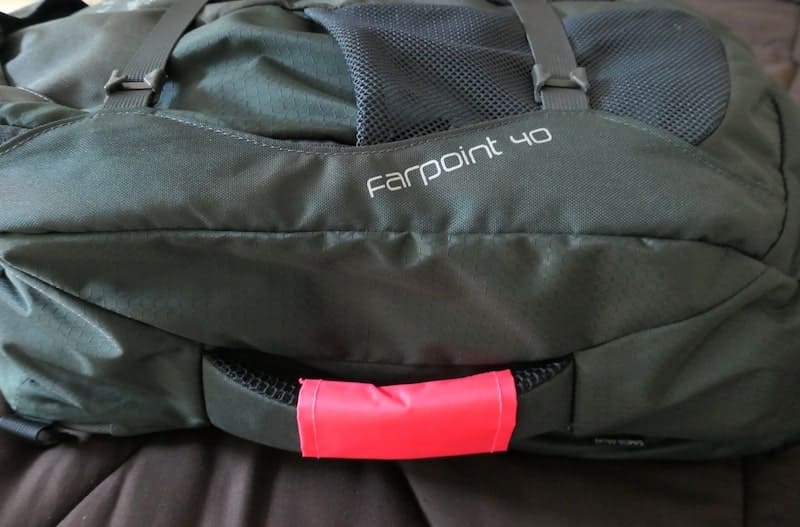
A stencil could help add a travel-inspired creation to the outside of a hard or soft-sided bag. Or, check out the variety of travel stickers that can be attached to hard-sided luggage, guitar cases, or laptop bags.
A luggage strap helps prevent a bag from opening while in transit. Some straps incorporate a luggage tag or lock in the design.
A luggage cover protects a bag from scratches and dirt, and makes it instantly recognizable. A cover can also provide a measure of security by minimizing the chance of pilfering or keeping belongings in place in case of a zipper malfunction. Look for a washable, lightweight fabric with high elasticity and openings for luggage handles and wheels.
Avoid colourful embellishments such as pom-poms, ribbons, or scarves that could catch on luggage belts, carts, or other bags and increase the likelihood of damage to equipment or bags.
2. Insert a bag tracker
Slip a tracker such as Tile Mate or Apple AirTag inside your bag and use the respective app on a compatible device to locate it. A tracker in a holder can be attached to an inside zipper, key chain fob, or other attachment point inside a bag or purse.
3. Secure your bags
The type and design of luggage will influence how best to secure it. My Osprey Farpoint 40 has interlocking zippers so I use a triple cable lock. One cable locks the two sets of zippers together, and the other can be looped around the handle, or to another bag or fixed object. It’s also useful for securing luggage in a hostel locker.
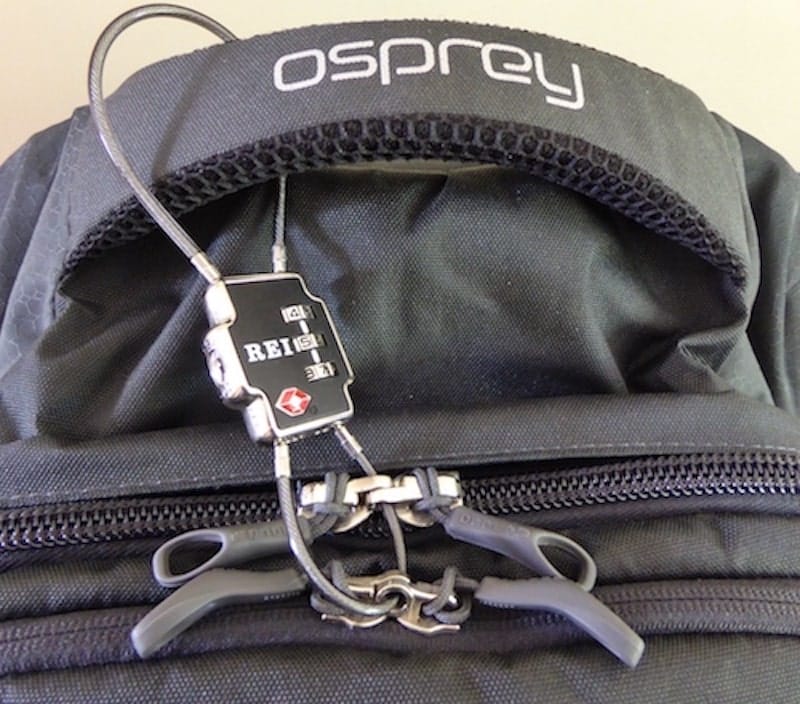
There may be occasions that call for a lightweight luggage cable. It can be used to attach my bag to a belt loop when napping in an airport terminal, or lock several bags together when travelling with others. When travelling by train, a cable can help secure a bag to the luggage rack.

Might a low-tech luggage alarm hold some appeal? If your bag is moved while you are sleeping, or from a luggage rack that isn’t easily monitored, a bear bell will alert you and hopefully discourage an opportunistic thief from proceeding with the plan to take your bag.
4. Take photographs of your bags
Take photographs of all bags and their contents: checked luggage, ‘standard’ carry-on bag destined for the overhead locker, and ‘personal’ item to be stowed under the seat in front.
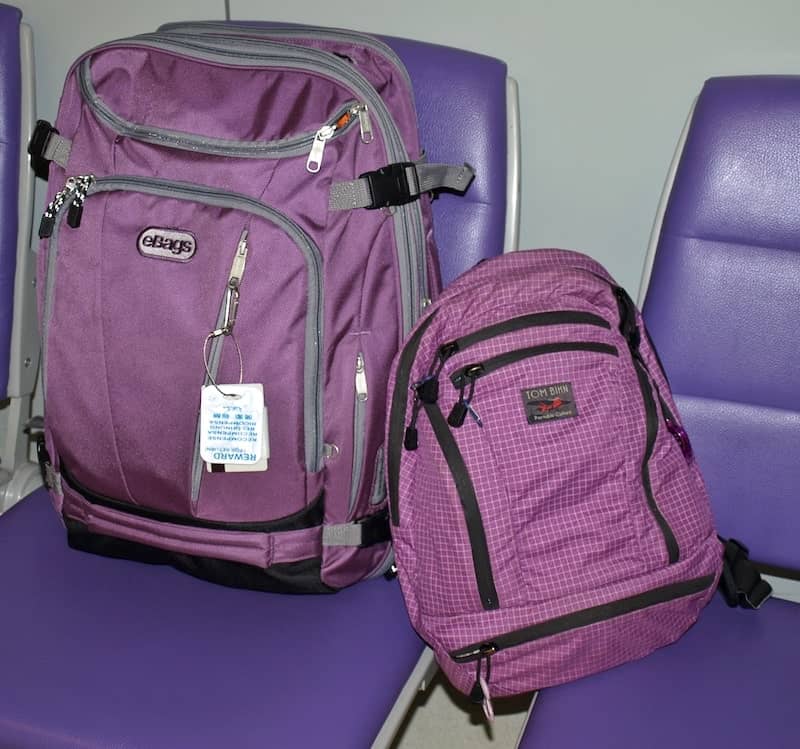
Then, draft an email to yourself with the photographs as attachments. Keep receipts and include photos or scanned copies. In the body of the email describe the bags in detail. For each bag, specify the brand and model, colour, dimensions, and any distinguishing characteristics that help the bag stand out. List the passenger’s name, home and destination addresses, email, and telephone number(s).
If a bag goes missing, the email will be at your fingertips to forward to the airline’s baggage claim services, or the police if it’s suspected luggage was stolen.
Remove all stickers or tags from previous journeys. An automated system might scan an old tag in error, sending luggage off to an unwanted destination.
Luggage tags aren’t something to be overlooked, or relegated to afterthought status at the check-in counter at the airport. There’s a good chance those flimsy paper tags provided by airlines will not survive the flight. Include ‘luggage tags’ on your packing list so they’re not forgotten, and have the necessary pre-trip attention they deserve.
Here are some tips on preparing and using luggage tags.
A lost-and-found tag helps hoteliers and hosts, airline and airport security staff, or Good Samaritans, take steps to facilitate the return of lost possessions.
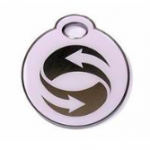 My lost-and-found global recovery service of choice is ReturnMe. Each tag has a unique code that can be registered online. When an item is found, the finder visits the company’s site or calls a toll-free number for instructions on returning the item at the company’s expense.
My lost-and-found global recovery service of choice is ReturnMe. Each tag has a unique code that can be registered online. When an item is found, the finder visits the company’s site or calls a toll-free number for instructions on returning the item at the company’s expense.
-
-
- For more information, see Lost and found recovery services for travellers.
-
(ii) Limit personal information on the external tag
If the information is visible to passers-by, it can end up being scrutinized by many people. A home address can alert would-be burglars that there may not be anyone at home and it’s a good time for a robbery. A home landline telephone number can be enough for thieves to obtain a home address using reverse phone number lookup websites.
A luggage tag needs to contain just enough information to facilitate the return of a delayed, lost, or stolen bag. A name, cell phone number (don’t forget the country code), and email address should be sufficient. If another person has taken a bag by mistake, having a cell phone number may mean that a bag can be returned before the person leaves the airport.
(iii) Match names: luggage tag and ticket
It might be tempting to use initials as opposed to a full name. However, the airline or transportation company may be able to contact you much faster if its computer can match the name on the luggage tag with the exact name on the ticket.
A checked bag will be handled by different people and different equipment in all kinds of weather. Durability is essential.
A luggage tag will never go missing if it’s in a built-in luggage tag holder that’s part of the design of the bag. Some bags have slide-in windows for contact information. Others have zippered luggage ID pockets.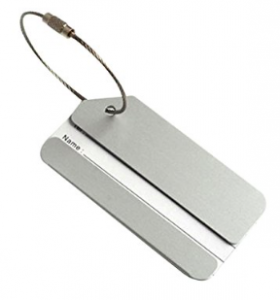
Other options include an aluminum tag with a stainless steel cable.
Or, pick up some self-sealing laminating pouches for inserting a business card.
Customized tags are available from a host of web-based companies. I can recommend Personalization Mall. Its simple and straightforward process allows a customer to create unique designs from a wide selection of templates. I downloaded some favourite travel photos to create luggage tag gifts for travelling companions.
Some travellers place a tag on each grab handle as an extra precaution in case one becomes separated from the bag.
Is it wise to choose a luggage tag with a flag or readily recognizable national symbol that advertises your country of origin? One advantage is that it could be a catalyst for interesting conversations. A disadvantage is that it might attract unwanted attention.
(v) Save the personal and trip details for the internal tag
An internal luggage tag can contain more information. My internal tag reflects my itinerary. It lists each address and telephone number where I’ll be staying, and the dates I’ll be at each place. If I’m separated from my bag, the inside tag reveals phone numbers where I can be reached, and a complete address if the bag needs to be shipped. It prints on letter-sized paper, a perfect size for slipping inside a plastic page protector. When it’s placed on top of the contents of my bag, it’s hard to be overlooked. In addition, a copy is placed on the door of the fridge at home for the benefit of stay-at-home family members.
(vi) Keep luggage tag templates on file
Completing luggage tags is much easier if templates are kept on file. Air Canada’s Baggage ID card inspired the template for my internal tag. The template for my external card contains space for my name, email address, and contactable cell phone number. If I’ll be out of the country and not roaming with my cell phone number, I’ll list the telephone numbers (including country code) where I can be reached at my destination.
(vii) Prepare luggage tag inserts for each segment of travel
For multiple segments with different contactable telephone numbers, it takes so little time to prepare a number of inserts to take with you on your travels. Each one could contain your name and email address, with the respective telephone numbers of family, friends or hotels that are booked in advance. In countries where you plan to pick up a local SIM card, those inserts could have a blank space for the number to be inserted. It takes a little advance planning but well worth it if it facilitates the early return of lost luggage.
(viii) Don’t rely on one type of luggage tag
Social media travel groups are popular forums for requests for advice on how to track down missing bags. It’s surprising how many refer to carry-on bags taken by other travellers from the overhead compartments. Some respondents mention how they’ve mistakenly taken the wrong bag and their difficulties in determining the owner and how to contact them.
Contact information in a luggage handle wrap is useful only if a person thinks to look there. A tag attached to the outside of a bag is helpful if it hasn’t been separated from the bag during transit. An internal tag is most useful if sits on top of what’s packed and can’t be missed by someone who opens the bag.
7. Keep your checked luggage receipt in a safe place
When a bag is processed at the check-in kiosk or counter, each item of checked baggage will be tagged with an airline luggage tag. It includes your flight number and destination airport. Always verify the code of the destination airport matches what’s on your itinerary. The receipt portion can then be removed and attached to your boarding pass or stored in a safe place.
The following is from a recent post in a social media travel group:
“I’m currently in Amman, Jordan without my checked luggage. I flew Air Canada from Toronto to San Francisco, then Turkish Airlines to Istanbul and Amman. All flights were booked through Turkish Airlines and my checked bag was tagged by Air Canada in Toronto.
I lost my boarding pass with the checked luggage sticker so the best I could do was describe my bag at the Turkish Airlines desk in Amman. The airline can’t find my luggage, is saying the bag doesn’t exist, and they’re unable to help me.”
Safeguarding the receipt is critical, as it contains important information that can help track a delayed or missing bag. Also, ensure the tag shows the correct destination and flight number and, if you are making connections en route, that your baggage is checked to your final destination.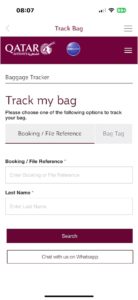
8. Download the airline app and activate luggage tracking
For checked luggage, most airlines have a luggage-tracking feature within their app. It’s usually found under More > Track My Bags (sr something similar). It allows passengers to see when their bag has been loaded onto a flight, and when it has been unloaded.
Conclusion
While waiting for a friend to arrive in Montreal, I noticed these bags standing neglected in the baggage claim area. It looked like they’d been there for some time and outside the reach of airline and airport staff to help reunite travellers with their luggage.
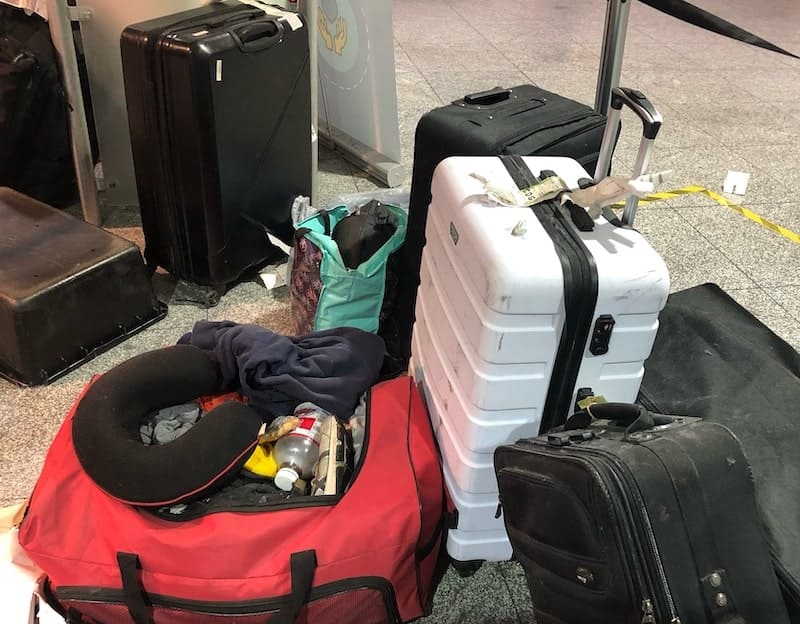
All this to say, use a variety of tools to make it easier for you to track down a missing bag, and for others to help you and your luggage get back together and not end up as unclaimed luggage in a warehouse in Scottsdale, USA.
If you found this article useful, please share it on your favourite social media channel by clicking on the respective button(s). Also, would you like to weigh in? What’s your approach to luggage tags, trackers, and other ways to make your luggage stand out?
Pin it for later?
Some of the links in this post are affiliate links. This means that if you click on an affiliate link and purchase something, you don’t pay more but this site earns a small commission that helps with the costs of maintaining the site. Thank you for your support.

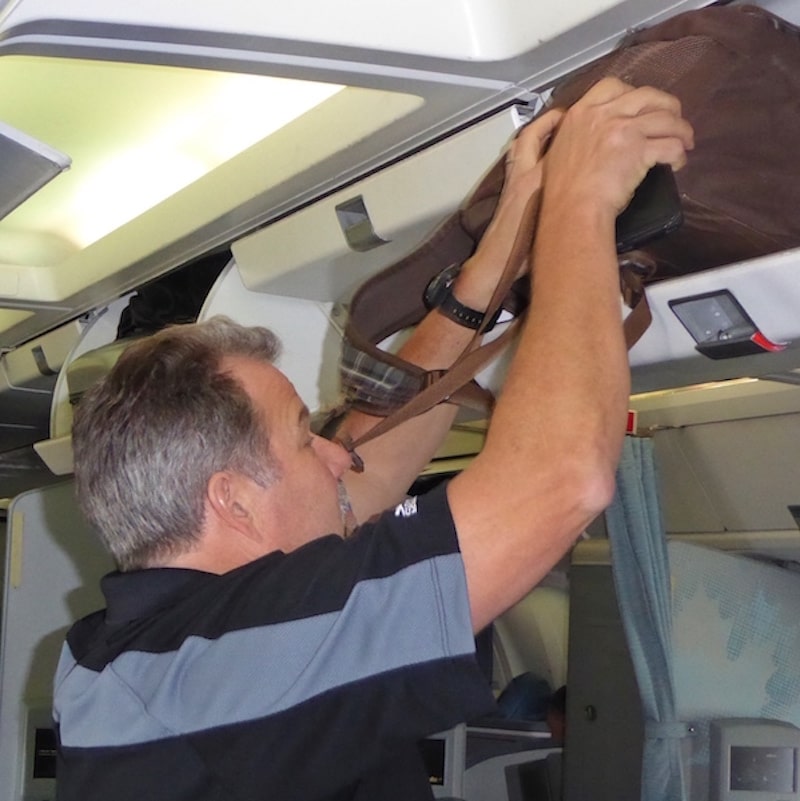

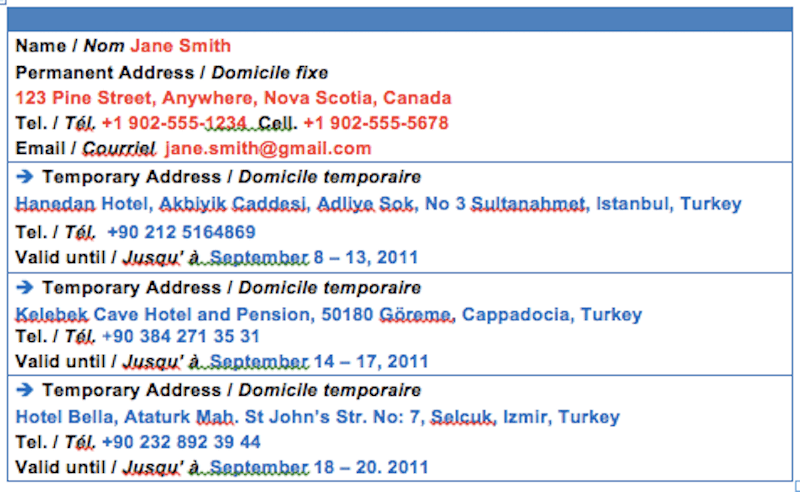




Great information
So many things I have never considered
I personally prefer SuperSmartTag luggage tags. They protect your identity and allow you to be anonymous while keeping your luggage traceable. 🙂
Thank you for the suggestion, Jennifer.
Anne Betts recently posted…Emergency ID bracelet for travellers
Nowadays, it is common to lose your luggage while traveling by air. These tips are really helpful and would make things much easier in case of a mishap
Alitalia lost my luggage for 12 days. It was returned to me three days before the airline closed shop. I think the this is what made it easy (not so easy because it took 12 days! )for them to return my luggage I had was I had a photograph of the luggage and the baggage tag, which is quite an unusual baggage tag.
Amazon has a T-shirt called the “clever travel companion”. It’s a tank top with pockets and I wear it under my T-shirt or a blouse or whatever. I think the white one has deeper pockets than the black one. Knock on wood but it would be very hard for someone to get to it.
Great tips! Here’s an idea. Take a picture of your luggage receipt in case you lose it. For me, my phone pictures are backed up to Google Photos, but the email tip could be used also.
Awesome Information. Thanks a lot !